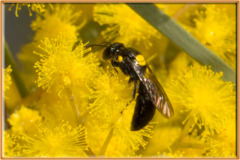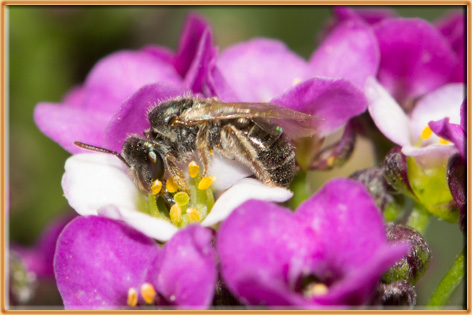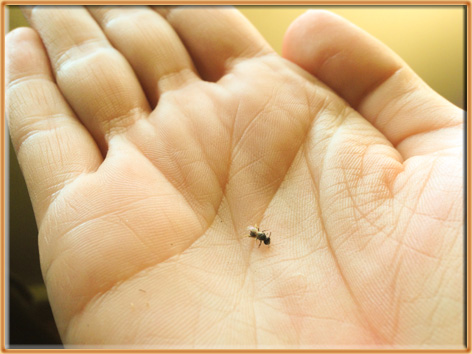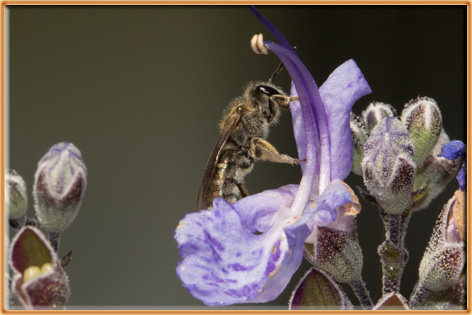Native bee spotting is on again
/That's right, the first native bees of the season have appeared in our garden. For the record, it was eight days earlier than last year's first sightings.
So far I've seen at least five species of native bees in the garden - and had some help via the BowerBird website to have them identified. Thank you Dr Ken Walker and Mr Michael Batley. I'm hoping to build on my previous records as to which native bees are seen when through the season.
Predictably, the very first native bees seen were on the hardenbergias (you might know these plants as happy wanderer, purple coral pea or false sarsparilla; Hardenbergia violacea). It's a bee magnet with its early, purple pea flowers. I've planted some more of these this year, as they are so popular with the native bees. Honeybees and other insects are also taken with it. My white and pink hardenbergias are not nearly as popular as the purple flowers of this one.

Images: left and middle - female Trichocolletes tenuiculus zipping between hardenbergia flowers;
right - a male rests on a leaf.
As you might expect, my ability to spot native bees has slowly improved with practice and experience. So too has my knowledge of where to look for them. Previously I'd not paid much attention to our single wattle, an Acacia boormanii or Snowy River wattle. However that changed when its leaves were used as nesting material by a native bee last year (see here).
Maybe I haven't looked closely enough at this plant during flowering before either. This week I've noted two species of native bee on this wattle's flowers; a brightly colored 'red bee' (see below left) and one of the Hyleaus bees, which you could be forgiven for assuming to be a wasp (below, right). These bees have a smooth appearance, where a common expectation is for bees to be hairy or honeybee-like.


Image: a bright red bee Lasioglossum (Parasphecodes) hilactumImage: Hylaeus (Euprosopis) honestus
The smallest of the bees spotted so far were only about 4mm long. That makes them very easy to overlook, or perhaps assume them to be some other small insects.

Image:Lasioglossum (Chilalictus) cognatum - the flowers are alyssum.

Image: Another shot of L. cognatum (I found this one on its last legs), just to reinforce how tiny they are
- I assure you I have small hands and it's not an accentuated camera angle.
The final species caught by my camera so far is a common one from the Lasioglossum genus. The female below joined many honeybees and several other pollinators on the rosemary this week.

Image: Lasioglossum (Chilalictus) lanarium
If you'd like to see some additional photos of my 'early' bee sightings click any of the the images above to see their respective entries on BowerBird. Or to browse the enormous range of photos being uploaded by people across Australia of fungi, birds, mammals, insects, flowers and more visit BowerBird.org.au.
I reckon native bee spotting is a great hobby. (Bet you wouldn't have guessed I feel that way!). Or any nature-watching for that matter. It gets you out into the sunshine and fresh air. It connects you to your environment. And, for me at least, it's exciting and awe-inspiring to observe what many people do not see. What's more, if native bees are your preferred critter to watch, when the weather turns too cold or windy you can give it a miss - the bees don't like it either, and won't be out!
Consider having a look in your backyard, a park or even along the footpath. You might be surprised what you find.


